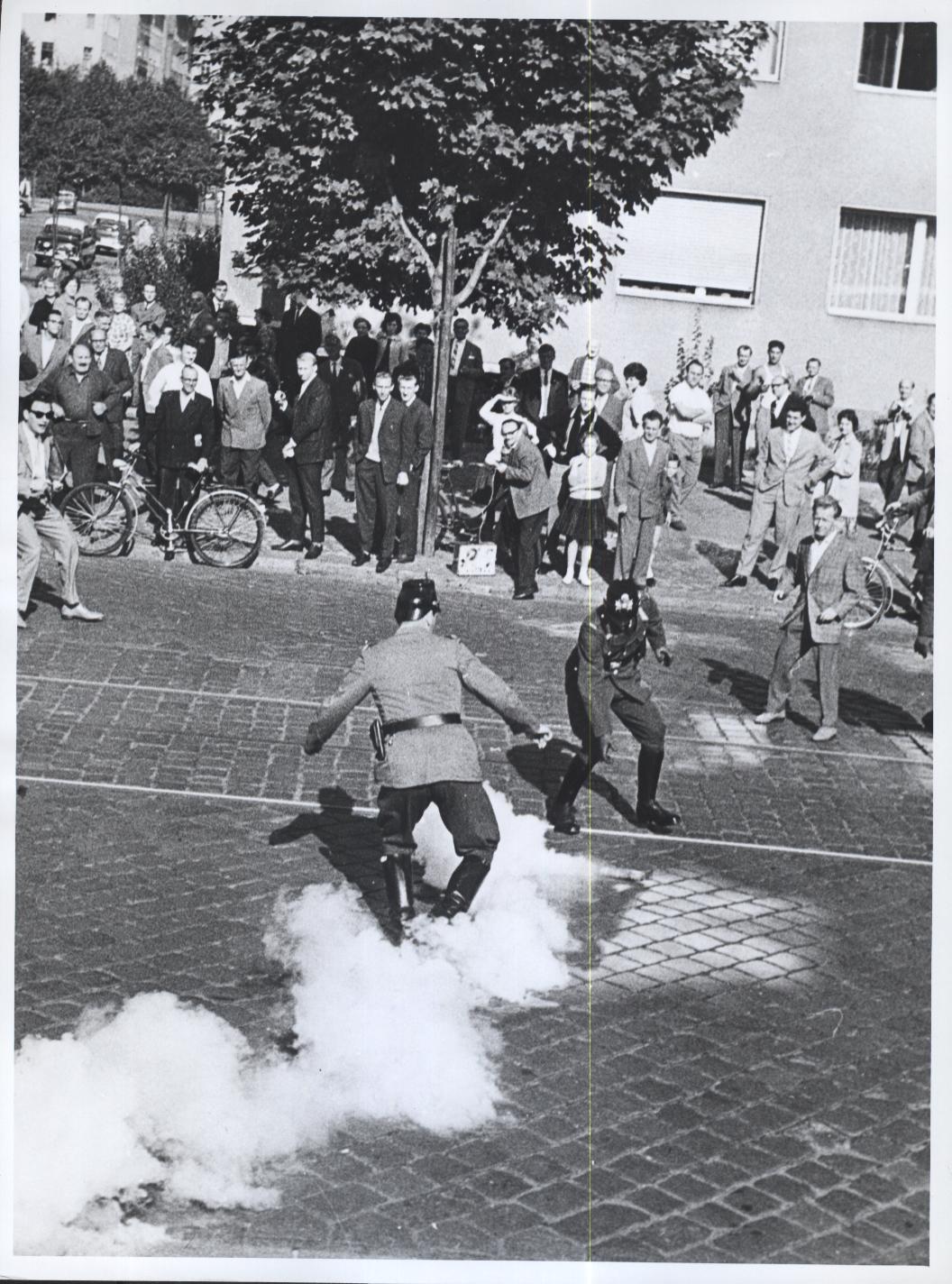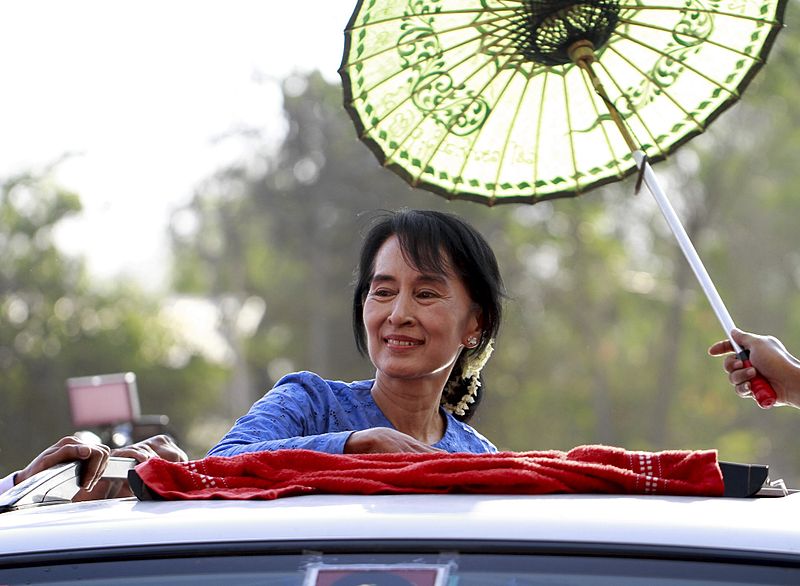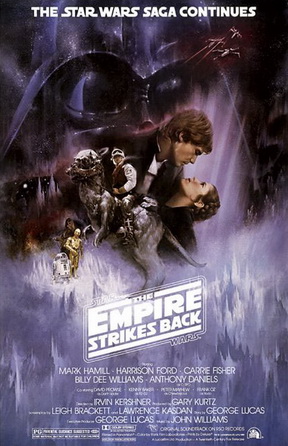This post is part of the “Would Someone Please Explain This to Me?” series. Thank you for all of the excellent questions readers asked, and we’ll do our best to answer them over the next few weeks.
Last week Pauline Moore asked the following:
“What do the recent horrific shootings in Colorado say about the nature of political violence in the U.S.? More broadly, what do events like this say about the nature of political violence in democracies? Most of the analysis offered on this blog has been dedicated to political violence in non-democratic states (understandably so, as the scale and intensity of political violence is greater in these countries, and the instances thereof much more frequent). But political violence certainly exists in democracies, albeit in drastically different form.”
I recently wrote an article that addressed some of these questions: “When Democracies Kill: Reflections from the US, India, and Northern Ireland”, published in the International Area Studies Review. I say “some” because (as is frequently the case) I am generally interested with what governments do and, as in most contexts, I maintain that they are responsible for most politically-related deaths on the planet — the sea and outer space are still up for grabs. I also consider deaths that governments are complicit in: i.e., deaths that they could stop if they put forth the effort.
This does and does not get at Pauline’s question. I believe that events like the shootings in Colorado tell us very little about the nature of “political violence” in the US. While mass shootings are violent and take place in the US, I think that there is very little about them that was “political” (i.e., they were not designed to influence who gets what, where and why; they do not directly nor indirectly involve the sovereign authority and proportionally they did not impact a large number of people). In part, this is because mass shooting like the attack in Aurora are typically limited to a single homicidal maniac with no grand agenda and no partners or affiliates. Clearly this is very different from the highly-politicized killing that took place in Norway last year, McVeigh’s bombing in Oklahoma and, more relevant to my discussion, people executed by the US government on a yearly basis, those tortured in “Gitmo” and Abu Ghraib as well as those victimized by police brutality.
Within “When Democracies Kill”, I argue that generally democratic governments appear to kill for political reasons when
(1) political threats are perceived by authorities as well as ordinary citizens, (2) when victims are not viewed as core members of the polity, (3) when some measure of legality is provided for the repressive process, and (4) when the application of repression is viewed as being small-scale and non-systematic. Three factors emerge from detailed case observations of political conflict within the United States, India, and Northern Ireland that I have been undertaking for various periods of time over the last 15 years. In this work, democracies appear to kill because of their (5) highly decentralized structure, (6) the fact that they engage in the worst activity before the polity is politically ‘opened’ and (7) relevant behavior takes place within areas that were created to be isolated from the rest of society (both psychologically as well as physically)
As one can see from the list, I am less concerned (although no less saddened and troubled) by the random actions of an insane few than I am the systematic and much more destructive acts of a seemingly rational many. Therefore, in the US I am less concerned with the Aurora killings and Colombine than the historical pattern of anti-black violence. By this, I am referring to the brutal activities unleashed during slavery between 1654-1860 (forced labor, killing, rape and torture), the period of lynching which followed 1880-1950 (torture and killing) as well as the inhumane and highly biased activities that exist within and outside of the prison system from the late 1800s to the present (i.e., psychological intimidation, imprisonment, beating, rape, torture and killing). These crimes were and are not few in number, they do not involve small numbers of individuals and, quite frequently, there is no question that agents of the government directly participated. In short, these are highly political in the traditional sense. If one includes “outrages” (i.e., anti-black activity undertaken right after the civil war), “race riots” (the white, anti-black ones of the early 1900s), church burnings from 1989-1996 as well as “hate crimes” from 1996-2009, the number of abuses, numbers of victims as well as perpetrators would skyrocket. When one also contemplates adding in black on black violence (gang related and otherwise), which I maintain is directly under the jurisdiction of the US government as it is supposed to protect the lives of all those who live under their domain, the reader’s head might just explode.

Now, I’m trying to get my head around these activities and with the sheer duration of time involved, the vastness of the degree of coordination across space and the significance of all this violence for not only the African American community but the US itself, it is clear that we have our work cut out for us – all of those that have an interest in political violence not just African Americans or those directly interested in/sympathetic to them. Indeed, as I just got a file with four million slaves from 1850, by plantation (indicating their age, race/color, perceived sanity and whether they had escaped), my team now contemplates what can be done with such information and they are slightly overwhelmed by how far we have to go before we can begin to understand what happened. Actually, feel free to join us at my unfinished and perhaps unfinishable project: Strange Fruit Incorporated.
I have selected violence specifically related to African Americans, for a variety of reasons. To have a conversation, however – a real conversation about violence in America — we would need to bring together information regarding Native Americans, women, Latinos, Asians, Whites and everybody else. To address and understand America the ugly, the whole pie, the whole melting pot needs to be identified, catalogued and then put back together. But, I suggest that we do not stop there. Violence in America needs to address the fact that political refugees from violence places around the world flock to the US. Does this have any influence the US or those entering? What impact does it have? Invoking a old, highly controversial but not well understood phrase, we need to pay attention to “structural violence” in the US and not just the most overt, most obvious manifestations. This is particularly relevant to the Native population but also African Americans, Latinos and poor Whites. Individuals die daily because of this activity/system but as there is no clearly identifiable weapon and perpetrator involved or, rather, the weapons and the perpetrators do not wear uniforms of the US government, as a community of scholars focused on quickly accumulated dead bodies, we have generally let this topic go. But, this is probably not appropriate – even given the conventional definition of politics offered above. If someone systematically and consistently does not get what is necessary to sustain life, if this knowledge is held by those in political power and if nothing is done, then this is as political as a political execution. Finally, Violence by America needs to be dealt with as well. The US is one of the leading actors in the world regarding violent activity (military and police related), training and weapons distribution (something related back to Violence in America, I suppose). With all that done perhaps we could speculate about the connections between Violence in and Violence by America. Perhaps then we could move beyond discussions of lone gunmen shooting up a movie theater in Colorado.






